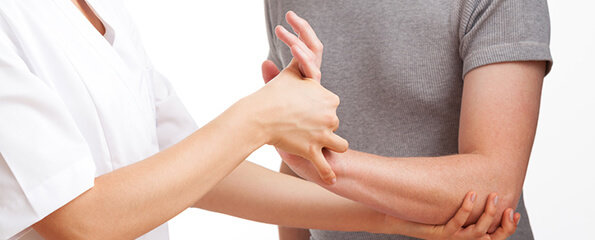Patients with severe paralysis regain use of hands and fingers
Six people with severe spinal cord injuries have regained the use of their hands and fingers through a non-invasive spinal stimulation technique.
Scientists employed at the University of California, Los Angeles (UCLA) and by UTS used the technique, a form of neuromodulation, to enable patients to turn doorknobs and open bottles for the first time since sustaining their injuries. They say their findings represent the most extensive reported recovery of patients’ use of their hands.
Research pioneer Professor V. Reggie Edgerton, who has been recruited to also work at UTS, developed the technique at his UCLA Neuromuscular Research Laboratory and will bring it to Australia through his work in the UTS Centre for Neuroscience and Regenerative Medicine and that of its director, Professor Bryce Vissel.
A new purpose-built facility in the Sydney suburb of Botany will allow this potentially life-changing research to be conducted outside the US for the first time, said Professor Vissel.
“Spinal cord injury is devastating to patients and to their families, and it’s usually judged irreversible. This work by Professor Edgerton and his team is remarkable and unprecedented – for the first time, a quadriplegic has recovered hand function through transcutaneous (across the skin) stimulation,” he said.
The research involves placing electrodes on the skin to stimulate the circuitry of the spinal cord. In this method of neuromodulation, called transcutaneous enabling motor control (tEmc), electrical currents are applied at varying frequencies and intensities to specific locations on the spinal cord. Patients also undertook intensive grip-strength training.
At the start of the study, three patients could not move their fingers at all, and none could turn a doorknob with one hand or twist the lid off a plastic water bottle. All had difficulty using a mobile phone.
“About midway through the sessions, I could open my bedroom door with my left hand for the first time since my injury,” said one research participant.
UCLA research scientist Parag Gad said within two to three sessions, everyone started to show significant improvements and kept progressing.
“In addition to regaining use of their fingers, the research subjects also gained other health benefits – better blood pressure, improved bladder and cardiovascular function, and the ability to sit upright without support,” Dr Gad said.
“The stimulation of the spinal cord acts like a hearing aid, allowing networks of neurons below the injury to communicate with the brain.”
Professor Edgerton said the research disproved the theory that only recently injured patients might benefit from the treatment.
“All six participants had chronic and severe paralysis for more than one year and some for more than 10 years,” he said. Spinal cord networks have gone dormant in patients with severe spinal cord injuries, but “most of the neurons remain and have to be re-taught how to work”, Professor Edgerton said.
“Now it’s pretty clear that dormant neurons can be awakened with stimulation. People haven’t believed this but almost have to accept this now because it’s happening in most subjects.”
Said Professor Vissel: “These findings bring hope to those who were told recovery following paralysis due to spinal cord injury would be impossible. We are seeing the beginnings of a possible revolution for what is possible for spinal cord injury”
The findings are published in the Journal of Neurotrauma. The research was funded by the Christopher and Dana Reeve Foundation, the National Institutes of Health, the Dana and Albert R. Broccoli Foundation and the Walkabout Foundation. Prof Edgerton is now employed by UTS, where he is Professor of Spinal Cord Injury, and also works at UCLA.
(Source: UTS Newsroom, Journal of Neurotrauma)
Dates
Tags
Created by:

 Login
Login














